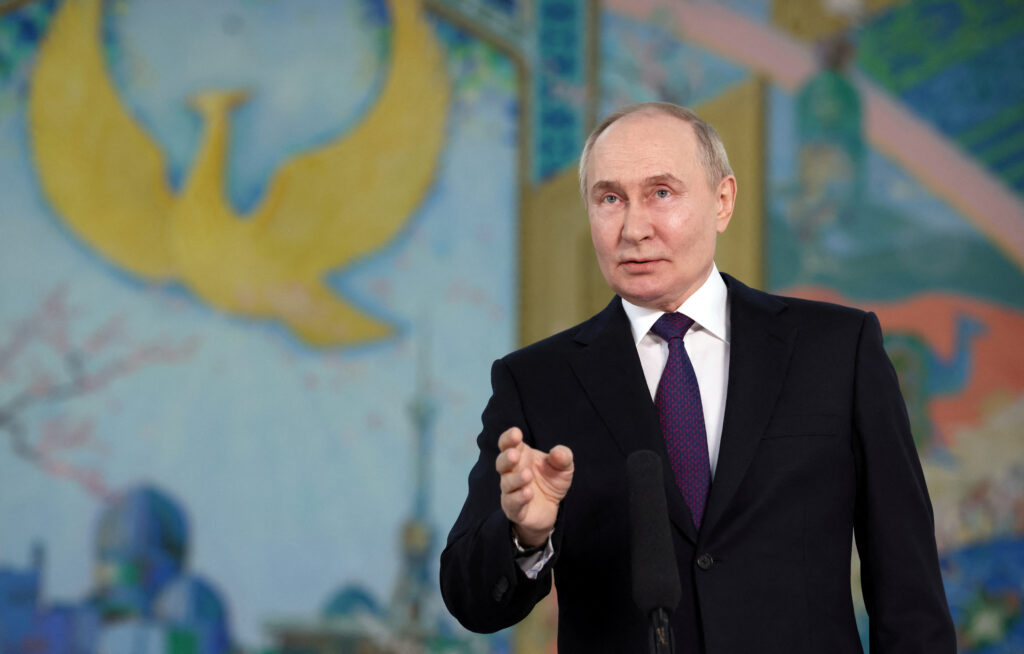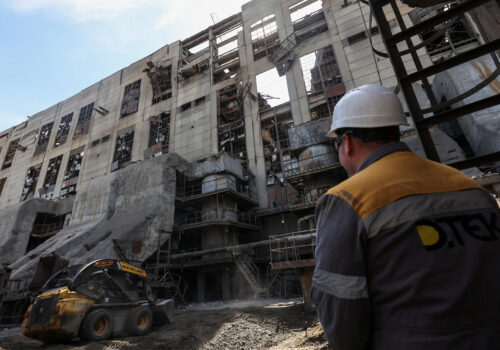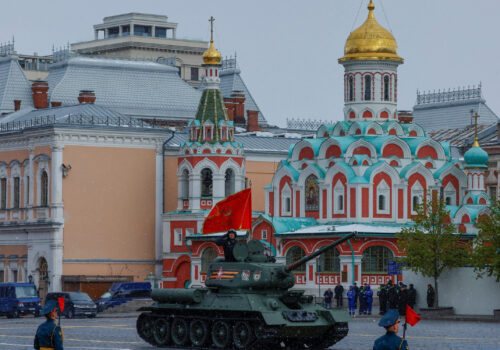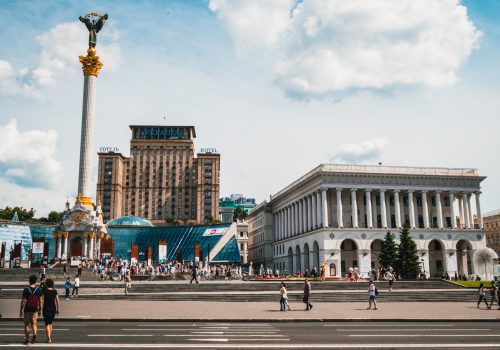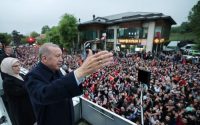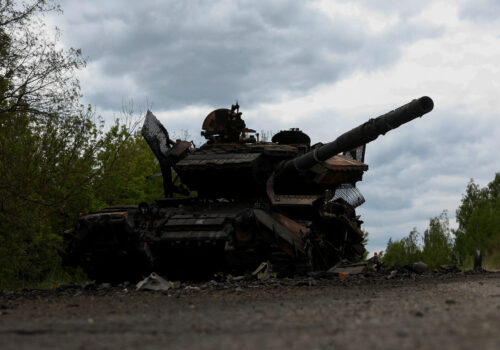
Vladimir Putin just tacitly admitted Crimea is not really part of Russia
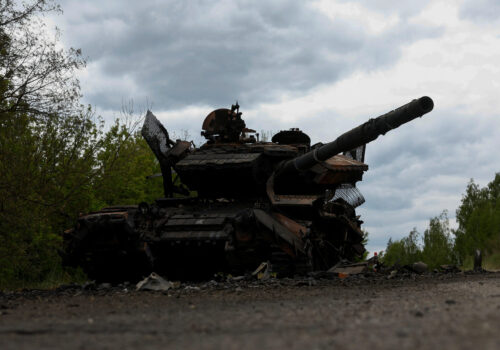
Ukraine achieved a major diplomatic breakthrough last week, securing the green light from key allies for strikes inside Russia using Western weapons. The Russian reaction to this landmark news has bordered on the hysterical, with a host of Kremlin officials and propagandists denouncing the West and vowing terrible revenge.
Predictably, Vladimir Putin led the way, issuing yet more of the thinly-veiled nuclear threats that have become his trademark. Speaking in Tashkent, Putin warned European leaders of “serious consequences,” before reminding them of their own vulnerability. “They should keep in mind that theirs are small and densely populated countries, which is a factor to reckon with before they start talking about striking deep into Russian territory,” he commented.
Close Putin ally and former Russian president Dmitry Medvedev’s response featured an even more explicit nuclear threat. Medvedev, who currently serves as deputy chairman of Russia’s Security Council, said it would be a “fatal mistake” for Western leaders to believe Russia was not ready to use nuclear weapons against Ukraine or individual NATO member states. “This is, alas, not an attempt at intimidation or a nuclear bluff,” he declared.
Russia’s use of nuclear blackmail is no longer particularly surprising, of course. Since the very first days of the Ukraine invasion, Putin has engaged in frequent bouts of nuclear saber-rattling as part of a broader Russian effort to establish so-called red lines and undermine Western support for Ukraine. Nevertheless, this latest example of nuclear bluster is worthy of closer attention as it inadvertently provides revealing insights into the political realities behind Putin’s lofty imperial rhetoric of conquest and annexation.
With his chilling references to “small and densely populated countries,” Putin clearly hoped to intimidate his opponents and signal that the use of Western weapons on Russian territory is a major red line for the Kremlin. But according to Russia’s own logic, this particular red line has already been crossed on hundreds of occasions. Since 2022, Ukraine has routinely used Western weapons throughout the occupied Ukrainian regions that Putin says are now part of Russia, without triggering any discernible escalation from Moscow. In Putin’s new Russian Empire, it would seem, some places are more Russian than others.
Stay updated
As the world watches the Russian invasion of Ukraine unfold, UkraineAlert delivers the best Atlantic Council expert insight and analysis on Ukraine twice a week directly to your inbox.
Officially, at least, there is no ambiguity in Moscow over the status of the Ukrainian regions claimed by the Kremlin. According to the Russian Constitution, Ukraine’s Luhansk, Donetsk, Zaporizhzhia, and Kherson provinces along with the Crimean peninsula are now all part of the Russian Federation. Russia proclaimed the “return” of Crimea in March 2014, just a few weeks after the lightning military takeover of the peninsula that marked the start of Russia’s Ukraine invasion. More recently, Putin announced the “annexation” of four more Ukrainian provinces in a lavish September 2022 Kremlin ceremony.
Technically speaking, the five Ukrainian provinces subject to unilateral Russian “annexation” should all now enjoy the same protections as the rest of Putin’s realm. In practice, however, it has long been apparent that Moscow has no intention of expanding its nuclear umbrella to cover these regions, or of even attempting to impose its red lines regarding the use of Western weapons.
The Battle of Kherson provides a particularly vivid demonstration of the credibility gap between Russian rhetoric and Russian reality. The only regional capital captured during the entire Russian invasion, Kherson was liberated in November 2022, less than two months after Putin had declared it to be “Russian forever.” Rather reach for his nuclear button, Putin responded to this embarrassing setback by ordering his defeated troops to quietly withdraw across the Dnipro River.
The evolving Battle of Crimea is perhaps even more revealing. For over ten years, Putin has insisted the occupied Ukrainian peninsula is now part of Russia, and has rejected all attempts to discuss its status. During this period, the seizure of Crimea has emerged as arguably the most important single element in modern Russia’s national narrative; it has come to be seen as the greatest achievement of Putin’s entire reign, and is widely regarded as a symbol of the country’s return to the top table of international affairs. This official Russian reverence for Crimea initially persuaded many in the West to view the peninsula as off-limits, but failed to deter Ukraine.
Since the early months of the war, Ukraine has been attacking Russian forces in Crimea with every available weapon, including those provided by the country’s Western allies. Western-supplied missiles have played a central role in the Battle of Crimea, enabling Ukraine to methodically deplete Russian air defenses throughout the peninsula and sink numerous Russian warships. The most eye-catching attack of all came in September 2023, when Ukraine used Western cruise missiles to bomb and partially destroy the headquarters of the Russian Black Sea Fleet in Sevastopol. If Kherson was an embarrassment for Putin, this was a very personal humiliation. Crucially, it did not lead to World War III. Instead, Putin withdrew most of his remaining warships from Crimea to the relative safety of Russian ports.
Eurasia Center events

The obvious inconsistency in the Kremlin’s public position regarding attacks on Russian soil has a number of practical implications for the further conduct of the war. It highlights the flexibility of Russia’s red lines, and strengthens perceptions that Moscow is primarily seeking to exploit the West’s own fear of escalation rather than establish any genuine boundaries.
Clearly, no responsible Western leader can afford to completely disregard the threat of nuclear war. At the same time, it is increasingly apparent that Russia’s relentless nuclear saber-rattling is losing its potency. By engaging in regular nuclear threats that never lead to action, the Kremlin has weakened the entire concept of nuclear deterrence and left Russia looking toothless. Based on the experience of the past two years, it now seems safe to conclude that while carpet-bombing the Kremlin might force Putin into some kind of drastic response, targeted attacks on Russian military bases and firing positions across the border from Ukraine are highly unlikely to fuel any kind of major escalation.
The Kremlin’s obvious reluctance to treat “annexed” regions of Ukraine as fully Russian directly contradicts Moscow’s own efforts to portray the occupation of Ukrainian lands as irreversible. While Putin likes to compare himself to Peter the Great and boast of “returning historically Russian lands,” he is evidently in no hurry to grant his Ukrainian “conquests” the kind of unequivocal security commitments that are the ultimate marker of sovereignty. Indeed, after more than a decade, the hundreds of thousands of Russian citizens who have been shipped to occupied Crimea since 2014 will no doubt be wondering how much longer they must wait before the Kremlin finally considers them worthy of protection.
Far from being set in stone, Russia’s territorial ambitions in Ukraine are largely opportunist and will expand or contract based on the military situation. Putin and his colleagues often call on Ukraine to accept the “new territorial realities” created by the current front lines of the war, but their actions send an unmistakable signal that the future of the “annexed” Ukrainian regions is still very much up for debate. Meanwhile, the multiple retreats from “historically Russian land” conducted by Putin’s invading army since 2022 suggest the chances of a nuclear apocalypse have been wildly exaggerated. This should help Kyiv’s Western partners overcome their self-defeating fear of escalation, and encourage them to finally provide Ukraine with the tools, along with the free hand, to finish the job of defeating Russia.
Peter Dickinson is editor of the Atlantic Council’s UkraineAlert service.
Further reading
The views expressed in UkraineAlert are solely those of the authors and do not necessarily reflect the views of the Atlantic Council, its staff, or its supporters.

The Eurasia Center’s mission is to enhance transatlantic cooperation in promoting stability, democratic values and prosperity in Eurasia, from Eastern Europe and Turkey in the West to the Caucasus, Russia and Central Asia in the East.
Follow us on social media
and support our work
Image: Russian President Vladimir Putin speaks during a press conference in Tashkent, Uzbekistan May 28, 2024. (Sputnik/Mikhail Metzel/Pool via REUTERS)
